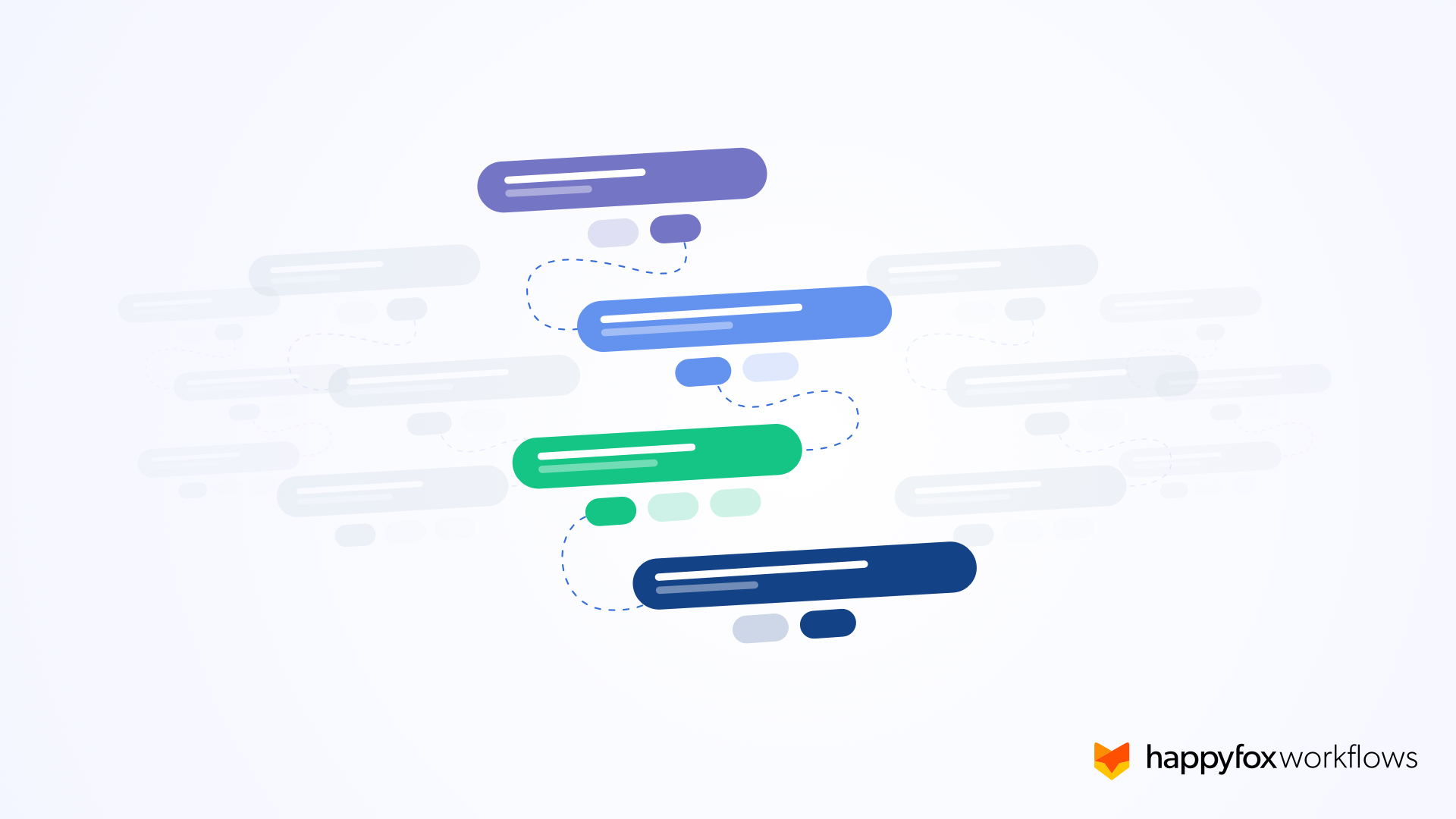Creating a new business process can be difficult for most organizations. A business process requires multiple teams, tools, and process owners to communicate with each other at various stages. Building a process in an old-fashioned documented format or on needlessly complex coding platforms can put enormous pressure on your teams. You won’t be able to view the end processes from a broad top-down perspective and make any changes necessary.
The good news is you have a much easier alternative. Visual workflow modeling or process modeling lets you create vivid and easy-to-view workflows in minutes on a drag and drop interface. Visual workflows make creating as well as reviewing a process easy. You can get a snapshot of the process status at any point in the process life cycle.
What is visual workflow modeling?
Visual workflow modeling is a design feature that allows non-technical users to drag and drop the sequence of events and steps in a workflow along with the various business rules to be met.
Look closely and you will find what efficient organizations have and new brands lack, a sophisticated and easy-to-use process builder that empowers the users to build and manage complex workflows. Most modern business process management (BPM) tools today have visual workflow modeling features.
Why should you use visual workflows?
Processes are not run on documents, but systems. To translate business steps into automated workflows, users need a way to visualize how each step fits into the process and how it affects the end result. In every workflow, at every stage, important decisions need to be made. For instance, an approval workflow involves important approval/rejection decisions. It has multiple steps and way too many stakeholders. Users should be able to understand what’s going on in a process at a glance and make decisions on the go. They should also have a mechanism to trace back the workflow should an error occur.

For instance, in a multi-step approval process, did every stakeholder approve, or was there a difference of opinion? These confusions can bring the operations to a standstill. Visual workflow modeling is the most accountable and reliable solution to creating a process you have complete control over in terms of visibility and management. It allows you to improve the workflows and make process changes on the fly.

Visual workflows also help you promote organization-wide workflow visibility. Any authorized user at any point will be able to look at the process and make sense of it.
What are the key aspects of visual workflow modeling?
A visual workflow is basically an actionable flowchart but much more advanced. Once you realize the benefits of a dynamic drag-and-drop user interface you won’t go back to anything else. Building complex process automation has never been easier. Take a look at the key aspects of visual workflow modeling that make this possible.
No code builder: With zero coding involved, you can build custom workflows with ease. Even non-technical users will have complete control over end-to-end process management.
Easy integration: Tools like HappyFox Workflows allow collaboration across both internal (Ex. HappyFox Help Desk) and external applications (Ex. Salesforce and Jira) to enhance process continuity across platforms. Processes can’t run without data. Integrating your business process management system with the rest of your applications will ensure that the data flow is never interrupted.
Easy collaboration: Visual workflows also improve user collaboration with private notes, agent tagging, and email notifications. Users can easily identify who works on what and contribute accordingly.
Adaptability: When you visually manage the workflows, you can make process changes as and when you want. Say goodbye to rigid workflow templates that don’t respond to changes quickly. Remove inefficient workflows or add new workflows with ease.
Workflow reusability: A process consists of several recurring steps. You can reuse the existing configurations any number of times by simply cloning the steps.
How visual workflow modeling works?
A process is typically a sequence of tasks moving across multiple levels of initiation, information collection, approvals, and business rules before reaching the end. These steps are unique to each business, so you need to create custom workflows that suit your requirements. In the example below, you will see the elaborate steps of IT asset request automation. The workflow doesn’t have one smart workflow rule but several.
Even on paper, these steps can confuse you — how many times to run each step, whom to tag, what actions does each step connotes, and so on. Visual workflow designer lets you translate documented steps and handwritten notes into actionable workflows easily. Once set up, all it takes is a single click on Run Workflow to execute the process.

There are also many recurring steps like Set Status and Notify Employee which are triggered at each approval level. You can reuse the configurations across multiple scenarios as necessary.
Thus the workflow will serve as the single rulebook for all incoming IT asset requests. You can add, remove, or modify any step easily without interrupting the operations. This makes visual workflows an asset for evolving organizations.
What are the benefits of visual workflow modeling?
With a visual workflow instructing you what to do when with prompt notifications, delays and human errors are less likely. More benefits of visual workflows are:
End-to-end automation: By automating every step in your workflow, you are enhancing productivity and maximizing performance at all levels.
Empowered users: With manual tasks out of the way, your teams can drive their entire efforts towards improving the end business processes. Customization further helps users model their workflows perfectly into the process engine.
Total visibility: Identify bottlenecks and inefficiencies by having a bird’s-eye view of the entire process life cycle in real-time.
Reduced cycle time and costs: The number one benefit of workflow automation done right is reduced processing time and costs, as there are no cumulative delays, buffer time, and unnecessary manpower wastage.
Error-free processes: Testing is easy in visual project management. You can implement and test process steps simultaneously and remove errors on the go. Since the processes are standardized, you won’t see any careless errors that are common in manual workflows.
Try HappyFox Workflows
HappyFox Workflows is a no-code visual workflow builder that lets you translate complex business processes into automated workflows. Automate your entire process cycle to reduce processing cost, boost user productivity, promote ownership, and most importantly, build processes with ease. Get a one-on-one demo to discuss your business requirements and use cases.








